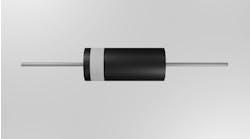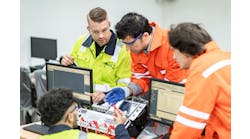Programmable logic controllers (PLCs) and programmable automation controllers (PACs) are the most efficient industrial computer devices when it comes to streamlining and automating manufacturing processes. They provide control functions that greatly reduce the need for human labor in plant operations, which improves productivity and significantly reduces downtime.
One of the most significant differences between a PLC and a PAC is that the PAC has a multiprocessor design. The PAC benefits from this since its multicore processors allow it to do multiple jobs at once.
Another distinction is that PLC scan logic is sequential; this implies that when the CPU examines an input signal for one function, it cannot examine an input signal for another function. The scan logic used by a PAC is a dual-logic scan. This means that the CPU can check several input signals while making a judgment on a single signal.
Memory space is another key difference between PLC and PAC. You will find both PLCs and PACs in industrial applications, power distribution, commercial applications and domestic applications.
When choosing between a PLC and a PAC, you will need to understand the different types of controllers. You will find that each type has a low-end and a high-end version with different capabilities. PLCs are used in a variety of small to medium projects because they provide various benefits and features. They are easily programmable, offer high reliability and are cost-effective, which makes them ideal for use in these types of settings. Programmable logic controllers offer high reliability by being resistant to power outages and sudden voltage drops. They are also known for being highly accurate when it comes to controlling processes. When thinking of a PAC, it would be described as a PLC with the processing power of a PC and more open architecture and modular design. PACs are capable of handling large amounts of I/O and can do this because they can exchange data between multiple devices and applications such as motion and process control. This is achieved by the PAC’s ability to accept data from any device or application on its local area network, process it, and then distribute it to other devices on the same network. PACs also gather and store large amounts of data, which can be used for predictive maintenance. This is helpful in monitoring equipment to make sure that it doesn't require an urgent repair before it malfunctions. PACs are also more popular in complex applications with multitasking or coordinated motion, while PLCs are best for simple applications and single-axis motions.
When talking about programming languages, the most asked question is which language to use, and what the future holds for ladder logic. In the industrial sector, a new generation of programmers and engineers has emerged. Traditional processes and tools are now being challenged by such an innovative user base. Ladder logic is a more visual-based programming language that is used by electricians and programmers. It's not as flexible as structured text and cannot be used to program more complicated calculations. Modern industrial applications require an increased level of calculations and interactions with data, so companies can extract more use from the data.
The five languages used in PLC and PACs are ladder logic, function block, sequential function chart, instruction list and structured text. Engineers are learning high-level languages, which allow them to have a more versatile skill set. With this kind of programming background, next-generation engineers have multiple programming languages in their arsenals that can be used to address different needs for applications. To take advantage of this, manufacturers are building the next generation of PLCs and PACs with the ability to communicate with multiple systems. These controllers are not just going to talk with the automation system, but they will communicate with business systems.
When handling data, math or complex logic, the structured text is best suited. Because it is an object-oriented language, you can create reusable and modular code along with robust libraries. You will find in most programs the code at the operator level is usually in ladder or function block diagram and hiding the structured text in the function block for the developers.
As the need for connectivity to higher-order IT systems and the high-level languages the engineering graduates will bring to the industry continues to grow, ladder logic will gradually move toward a more minor role. With all this said, choosing one of the five languages that best suits you will allow you to program quickly and create reliable programs. The industry will find that ladder logic will be around for some time. This is mainly because, when you think about the legacy systems that are working and can be repaired, companies will keep using them and wait to replace these systems.






